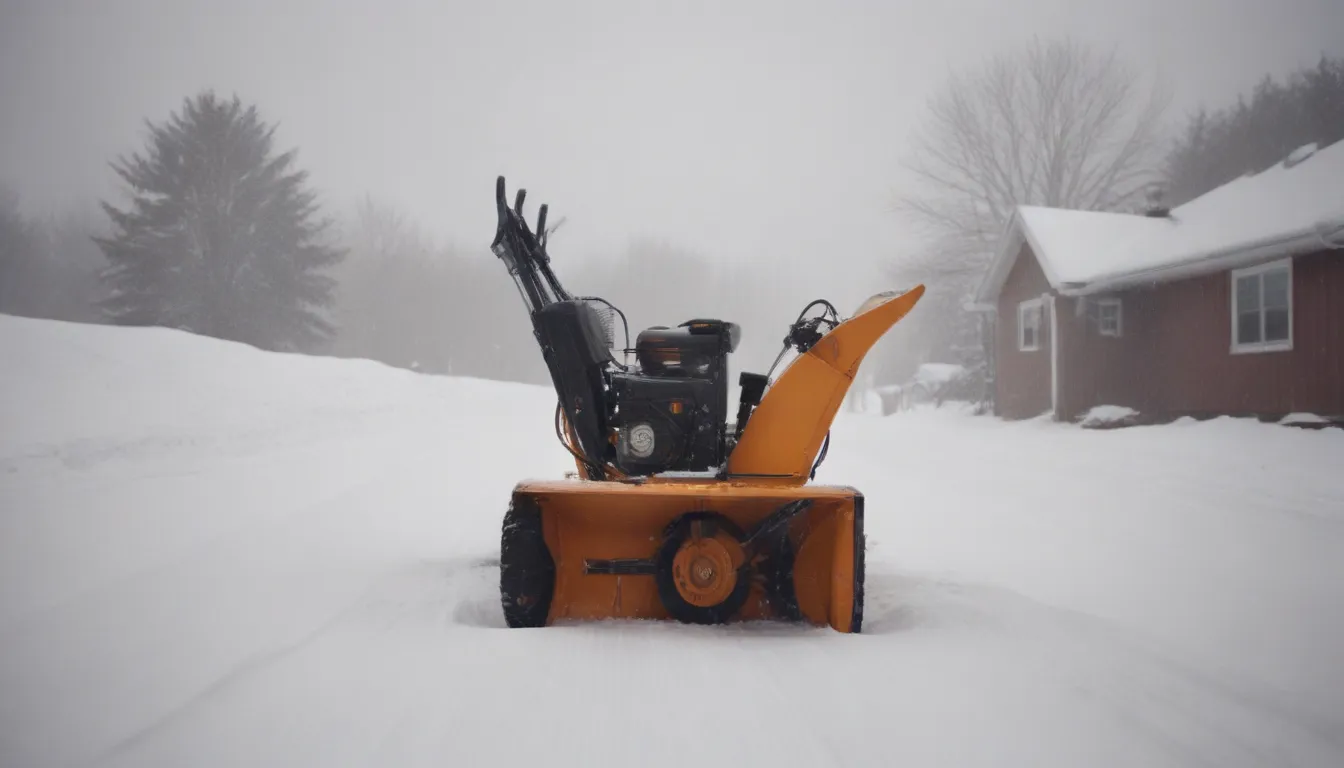Single-Stage Snow Blower vs Two-Stage: Which One is Right for You?

Snow blowers are essential tools for efficiently removing snow from pathways, front walks, and driveways. When faced with the decision between a single-stage snow blower and a two-stage snow blower, it’s crucial to consider factors such as snow depth clearance, snow throw distance, types of terrain, and pricing. In this detailed guide, we will explore the differences between single-stage and two-stage snow blowers to help you make an informed decision based on your specific needs.
Understanding Single-Stage Snow Blowers vs. Two-Stage Snow Blowers
Single-stage snow blowers operate by using a single component, the auger, to pick up and throw snow. On the other hand, two-stage snow blowers not only use an auger to gather snow but also incorporate an impeller to throw the snow further. Understanding the key differences between these two types of snow blowers can help you determine which one is best suited for you.
Snow Blower Auger: Key Differences
The snow blower auger plays a crucial role in the functionality of both single-stage and two-stage snow blowers. Here’s how they compare:
- Single-Stage Snow Blower:
- Auger gathers and throws snow
- No fan impeller
- Auger touches the ground
- Suitable for up to 8-inch maximum snow depth
- 36-inch throw distance
-
Best for slight inclines and paved surfaces
-
Two-Stage Snow Blower:
- Auger gathers snow only
- Fan impeller throws snow
- Auger does not touch the ground
- Suitable for up to 24-inch maximum snow depth
- 60-inch or more throw distance
- Ideal for steeper inclines and paved, gravel, or dirt surfaces
Gas vs. Electric Snow Blowers: What You Need to Know
When it comes to power sources, gas snow blowers are available in both single-stage and two-stage models, while electric snow blowers are only available as single-stage options. Here are some key points to consider:
- Gas Snow Blowers:
- More powerful than electric models
-
Provide greater mobility without the need for an extension cord
-
Electric Snow Blowers:
- Limited to single-stage models
- Offer convenience for smaller areas and lighter snowfalls
Single-Stage Snow Blower: Is it Right for You?
Single-stage snow blowers are designed to efficiently cut into snow, gather it, and discharge it through the chute. Here are some key considerations when deciding if a single-stage snow blower is the right choice for you:
- Maximum Snow Depth: Single-stage models can handle up to around 8 inches of snowfall.
- Terrain: Best suited for paved small- or medium-sized driveways and garages.
- Snowfall: Not recommended for regions with heavy or wet snowfalls.
- Mobility: Not available in self-propelled form, but the auger assists in pulling the blower forward.
- Usage: Ideal for areas experiencing light to moderate snowfalls.
Two-Stage Snow Blower: The Ultimate Snow-Clearing Solution
Two-stage snow blowers offer advanced features that make them a preferred choice for clearing larger areas efficiently. Here’s why a two-stage snow blower might be the right fit for you:
- Clearing Width: Two-stage blowers can clear widths of up to 30 inches in a single pass.
- Terrain: Suitable for paved surfaces, crushed stone, or gravel driveways.
- Snow Depth: Can handle up to 24 inches of snow with ease.
- Performance: Engine-driven wheels or tracks provide superior maneuverability.
- Efficiency: Clears a wider surface area compared to single-stage blowers.
- Snow Residue: Leaves a thin layer of snow or ice on the surface, which can be easily managed.
Low-End vs. High-End Snow Blowers: What Sets Them Apart?
When it comes to choosing between low-end and high-end snow blowers, there are key differences in performance and features:
- Low-End Snow Blowers:
- Narrow clearing paths (around 21 inches wide)
- Some models may require a pull cord to start
-
Limited extra features
-
High-End Snow Blowers:
- Wide clearing paths (up to 30 inches)
- Electric starts for added convenience
- Additional features like headlights, heated grips, and improved steering
Cost Considerations: Finding the Right Balance
Pricing plays a significant role in the decision-making process when choosing a snow blower. Here’s what you can expect in terms of cost:
- Gas-Powered Snow Blowers:
- Starting at around $500 for single-stage wheeled models
- Peaking at around $4,500 for high-end two-stage track-mounted models
- Mid-range models typically range from $800 to $1,200 and offer a balance of features
Whether you opt for a single-stage snow blower or a two-stage snow blower, understanding the key differences, performance capabilities, and cost factors can help you make an informed decision. Consider your specific snow clearing needs, terrain characteristics, and budget constraints to choose the right snow blower for your home.
In conclusion, both single-stage and two-stage snow blowers have their unique advantages and are designed to cater to specific snow removal requirements. By weighing the pros and cons of each type and aligning them with your individual needs, you can select the snow blower that best suits your preferences. Remember, a reliable snow blower is an essential investment for hassle-free winter maintenance, so choose wisely to make snow removal a breeze!





